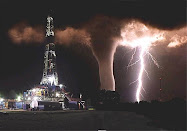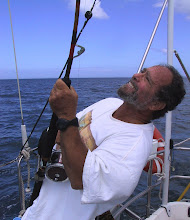Let’s inject a little science into this discussion. Science is not some egghead opinion – science is Gaia’s native language.
We may call it the “energy” problem but it isn’t. It’s the “power” problem. Energy is force over distance. Moving a metric ton uphill a meter against gravity requires 9800 joules. It could take a week or a second. If you do it in a second it requires 9800 watts of power. If you do it in a week it only takes 16 milliwatts. What you buy when you get a tank of fuel is latent, or potential energy, but the rate your engine burns it is power (“horsepower”). What you buy off the electric grid is power. Power is energy burned per unit of time.
Energy on this planet (are we all from the same planet? Raise your, er, arms or tentacles, or whatever) comes from only three original sources: the sun’s radiation, past or current, the radioactive material in the Earth that came from burned out stars, and the residual heat that came from the infalling matter when the planet was created. Every other manifestation of energy, from fossil fuels to wave power, derives from one of those sources. I deliberately omit such esoteric things as zero-point energy, and sustainable hydrogen fusion until someone tells me they can demonstrate it.
If it is stored, such as fossil fuel or the head on a hydro-electric dam, it is potential energy. When we convert potential energy into electricity or horsepower it becomes power. Petroleum reserves are potential energy. Coal reserves are potential energy.
When we exert a force to move something, such as a water falling from a dam or a speeding vehicle, we are converting potential energy into kinetic energy. Nature does this all the time, creating tides from the moon’s attraction, hurricanes from stored heat in the ocean, and forest fires from stored energy in the form of trees.
Every time some energy is converted from one form to another, some energy is lost.
Thermodynamics is the study of such conversions. The zeroth law is that the temperature of a material is a measure of the motion of its particles. Heat is molecular motion. Temperature is a way of measuring the collective speed of large numbers of particles. Usually we are talking about molecules as the moving particles. So temperature and kinetic energy are related. For the curious, we call this aggregate, which cannot be seen in individual cases such as the “temperature” of a single particle, as an emergent phenomenon. It emerges from the collective motion of a huge number of random particles, each with a different velocity. It is a lot more convenient to just measure the temperature than to describe the velocities of a bazillion molecules.
Every time we convert energy from one form to another we run into the first law of thermodynamics. Energy can only run downhill, from regions of higher concentration to regions of lower concentration. In an engine we drive a piston with hot gases, allowing the gasses to expand, cool and escape at a far lower temperature. All engines start with higher temperature sources of energy and convert them into lower energy sources.
In my physics class we referred to the laws of thermodynamics as: 0) You can’t get something for nothing; 1) You can’t win; and 2) Things aren’t getting any better. That last needs a bit more explanation.
When an engine ( any kind of engine, none are immune) exhausts its stuff (steam, hot air, or carbon dioxide) that exhaust is above the ambient temperature. It has to be or it won’t exhaust. Anything above ambient temperature is wasted heat. The second law is that everything wastes heat. There is no such thing as 100% efficiency. The whole universe is converting energy from one form to another all the time at a furious pace, and there is waste in every step. So eventually, there will be no more pockets of higher energy and every thing will come to a dead stop. The stars will go out. This is entropy inevitably winding down to zero.
My species won’t live that long, so I don’t have to worry about it right now. More of a problem is that the Earth will wind down long before that. You can’t do anything about it – it will happen. Perhaps cockroaches and water bears will be around to see it, they got through everything else so far.
Our choices are simply between dismal outcomes as long as we are confined to this planet. One is farther out, one is nearer. One is more dire, and earlier. If we elect to eliminate all possible sources of power generation and conserve our planetary resources, 95% of us will be dead in a few generations. That is what the planet can support with primitive technology – about 200 to 500 million humans. That number is based on population studies of primitive human cultures.
If we elect to burn our existing resources on an exponential curve so that each succeeding generation has a rising energy budget and that population is growing at the current rate, we will lose as much as half the population in ten generations. That is based on climate models and rather pessimistic projections of the consequences of habitat destruction.
Obviously, neither extreme is welcome, but the dependence of human beings on huge power resources is absolute. There is no quality of life, no prosperity, no science and no hope without power. That is not an opinion, but a conclusion based on economics buttressed by anthropology and the history of technology. There is no possible way for us to return to a simple pastoral life style without tragedy on an unimaginable scale.
The loose cannon on the deck is technology. Every solution to the problem of finding the happy medium between these extremes involves engineering, science, invention, innovation and new technology. That is where we have to focus our attentions and that is the subject of yet another blog.


No comments:
Post a Comment